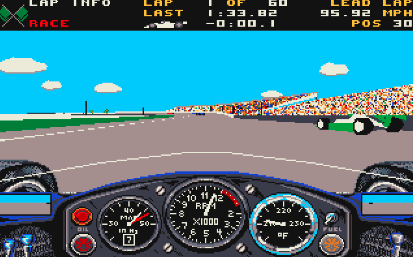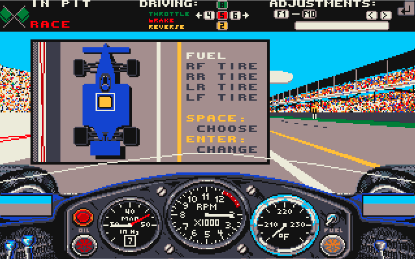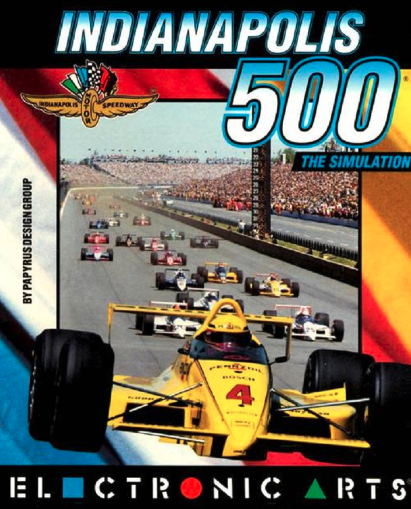In 1989, there was no shortage of arcade racing cabinets for experiencing high-octane thrills at the cost of a quarter or two. At home, console racing games provided a convincing sense of speed even if those experiences were graphically inferior to their arcade counterparts.
But motorsports is about much more than a mere sense of speed or the simple victory of crossing a finish line before the clock runs out. Outside of certain exceptions like Atari’s Hard Drivin’, the number of racing games that emphasized realism over the instant gratification of the typical race game were few and far between. To find them, one had to leave the consoles and the arcade behind and venture into the personal computer gaming market.
Eight years before Gran Turismo billed itself as “the real driving simulator,” Indianapolis 500: The Simulation (1989) differentiated itself from the arcade-y racers of its time with a focus on recreating the feeling of racing in the Indy 500 with as much realism as MS-Dos and a few 3.5 disks could muster.
Produced by Papyrus Design Group, Indianapolis 500: The Simulation is a first-person game with a view framed by information. Gauges realistically match the car’s acceleration. Players need only look to the top of the screen to keep track of their current position, previous lap time, current lap time, etc.


Before the race, players had to make special consideration for their car’s set up. Players could choose from a yellow Penske-Chevrolet, a blue March-Cosworth, or a red Lola-Buick. Each car came with unique starting stats, but each could be tuned and outfitted with new parts that would actually affect the way the car handled.
Players would choose to drive their finely-tuned cars through either 10, 30, 60, or 200-lap races on the Indianapolis Motor Speedway. The number of laps served as a difficulty selector as well, since cars wouldn’t take damage on 10 and 30-lap races. On the more difficult race settings, however, players could expect to deal with accidents, or potentially being retired during pit stops if they took enough damage. Players could even blow their engine if the revs go too high.
Though primitive by today’s standards, Indianapolis 500: The Simulation was considered a step forward for the racing simulation genre back in 1989. For context, consider that Rad Racer II, a game that continued in the tradition of the best arcade-style racers wouldn’t be released until 1990. Even a casual glance at these two titles and it’s plain as pixels which one served as a better simulation.
Papyrus Design Group followed up Indianapolis 500: The Simulation with IndyCar Racing in 1993. This game featured enhanced graphics over its predecessor and served as a realistic simulation of the entire 1993 PPG IndyCar World Series. An additional sequel, IndyCar Racing II, concluded the series in 1996.

